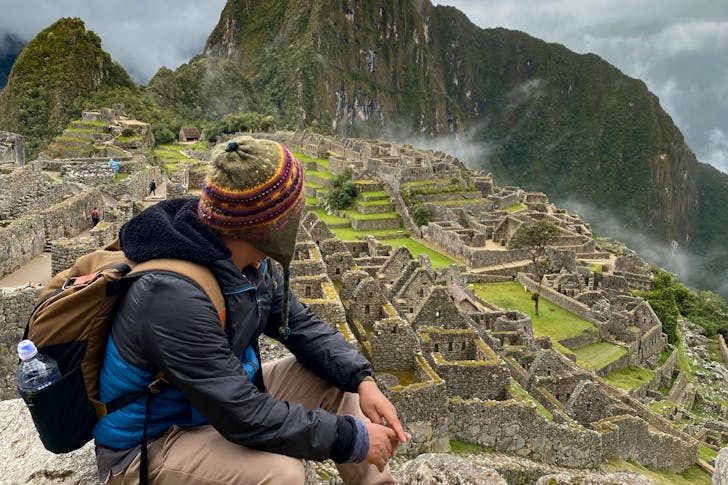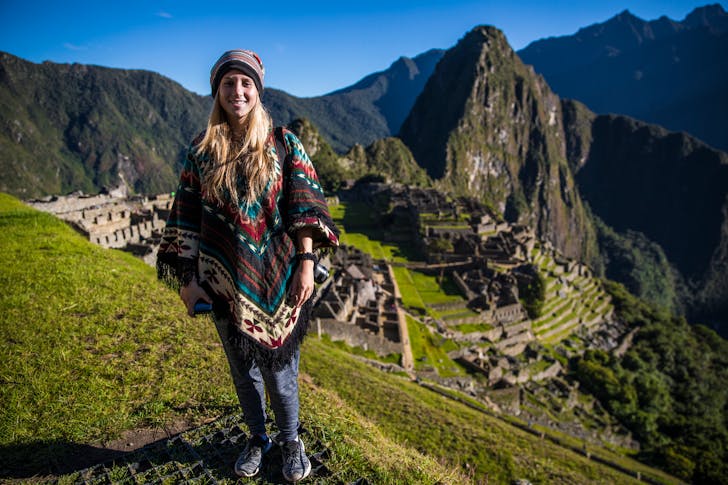Embarking on the Peru Machu Picchu hike can be a transformative experience, but knowing what to expect and how to prepare can make all the difference. From the breathtaking views to the rigorous demands of the trail, here’s everything you need to know about the Machu Picchu hike in Peru.
The Basics of the Peru Machu Picchu Hike
The Inca Trail has long held the top spot on many travelers’ bucket lists. If you’re considering, or already planning your hike to Machu Picchu, my firsthand account will provide a glimpse into what awaits you. From the lung-searing climb to Dead Woman’s Pass to the exhilarating final steps through Machu Picchu’s Sungate, let’s dive into the day-to-day experiences of the hike, but first, let’s cover some essential information!

Duration and Difficulty
How long does it take to hike the Inca Trail? The journey spans 4 days and 3 nights, covering 38km. The first day is a gentle introduction, but the second day ramps up the challenge significantly. By the third day, the pace moderates, and the final day involves an early but short trek to the Sungate at Machu Picchu.
Can beginners tackle the Inca Trail? Absolutely! If you’re in decent shape and comfortable with hiking up to 16 km in a day, this adventure is within reach. It’s perfect for newcomers to overnight hiking, thanks to the support of experienced guides and light packs.
Logistics and Costs
Is a guide necessary? Yes, hiking the Inca Trail without a guide is not permitted. The trail’s popularity means that despite a limit of 500 permits per day, it can still feel crowded.
What about costs? Expect to spend over $600 for the classic 4-day, 3-night trek. Prices can increase depending on the level of luxury and the size of your group, with additional costs for porters and special hiking permits.
Accommodations and Amenities
Where will you sleep? Comfort is key, and during your hike, you’ll sleep in tents set up by porters. These are usually provided by your tour operator.
Are there toilets? Yes, the trail has established facilities at each campsite. They’re rustic, but they save you from having to find a secluded spot in the wilderness.
Best Time to Visit
When is the best time to hike the Inca Trail? The trail closes in February for maintenance and can be quite wet through April. The best months for hiking are May through September, which offer warm and dry conditions, though they are also the busiest.

Preparation Tips
How should you prepare? The trail can be challenging, with long days and high altitudes. Start conditioning yourself with regular hikes, and consider spending a few days in Cuzco beforehand to acclimatize.
What to Pack for Your Peru Machu Picchu Hike
Selecting the right gear is crucial for enjoying and succeeding on the Inca Trail. Here’s a quick guide to what you should bring along:
Essential Gear
- Backpack: A durable, lightweight backpack like the Hyperlite Southwest is ideal if you’re carrying your gear. If a porter is handling your heavy items, a smaller pack will suffice for daily essentials.
- Sleeping Bag: Nights are cold at high elevation. A quality sleeping bag like the Patagonia Fitz Roy or a rented one with a liner can ensure a warm sleep.
- Sleeping Mat and Pillow: Don’t underestimate the importance of comfort. A good sleeping mat like the Therm-a-Rest NeoAir X-lite and a compact pillow like the Nemo Fillo Elite can make a huge difference.
Clothing and Footwear
Dress in layers and opt for moisture-wicking materials to handle the variable temperatures. Sturdy hiking boots are a must, as the terrain can be challenging and uneven.

Miscellaneous
Don’t forget a water bottle or reservoir, sun protection, and a first aid kit. Consider also packing a camera to capture the stunning vistas and memorable moments.
Conclusion
The Peru Machu Picchu hike is more than just a trek – it’s a journey through history and stunning landscapes. With the right preparation, it can be an unforgettable adventure. Remember, it’s not just about reaching Machu Picchu but enjoying the path that leads you there. Happy hiking!
